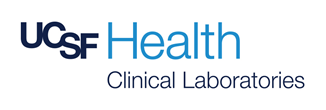
| Posaconazole start/change date: | Sunday | Monday | Tuesday | Wednesday | Thursday | Friday | Saturday |
| Posaconazole (assumes dose is given before noon): | Thursday | Sunday | Sunday | Sunday | Tuesday | Tuesday | Thursday |
| Posaconazole start/change date: | Sunday | Monday | Tuesday | Wednesday | Thursday | Friday | Saturday |
| Posaconazole (assumes dose is given before noon): | Thursday | Sunday | Sunday | Sunday | Tuesday | Tuesday | Thursday |
| Posaconazole start/change date: | Sunday | Monday | Tuesday | Wednesday | Thursday | Friday | Saturday |
| Posaconazole (assumes dose is given before noon): | Thursday | Sunday | Sunday | Sunday | Tuesday | Tuesday | Thursday |
| Ordering |
| Posaconazole start/change date: | Sunday | Monday | Tuesday | Wednesday | Thursday | Friday | Saturday |
| Posaconazole (assumes dose is given before noon): | Thursday | Sunday | Sunday | Sunday | Tuesday | Tuesday | Thursday |
| Collection |
| Processing |
| Result Interpretation |
| Posaconazole start/change date: | Sunday | Monday | Tuesday | Wednesday | Thursday | Friday | Saturday |
| Posaconazole (assumes dose is given before noon): | Thursday | Sunday | Sunday | Sunday | Tuesday | Tuesday | Thursday |
| Administrative |
| Complete View |
| Posaconazole start/change date: | Sunday | Monday | Tuesday | Wednesday | Thursday | Friday | Saturday |
| Posaconazole (assumes dose is given before noon): | Thursday | Sunday | Sunday | Sunday | Tuesday | Tuesday | Thursday |